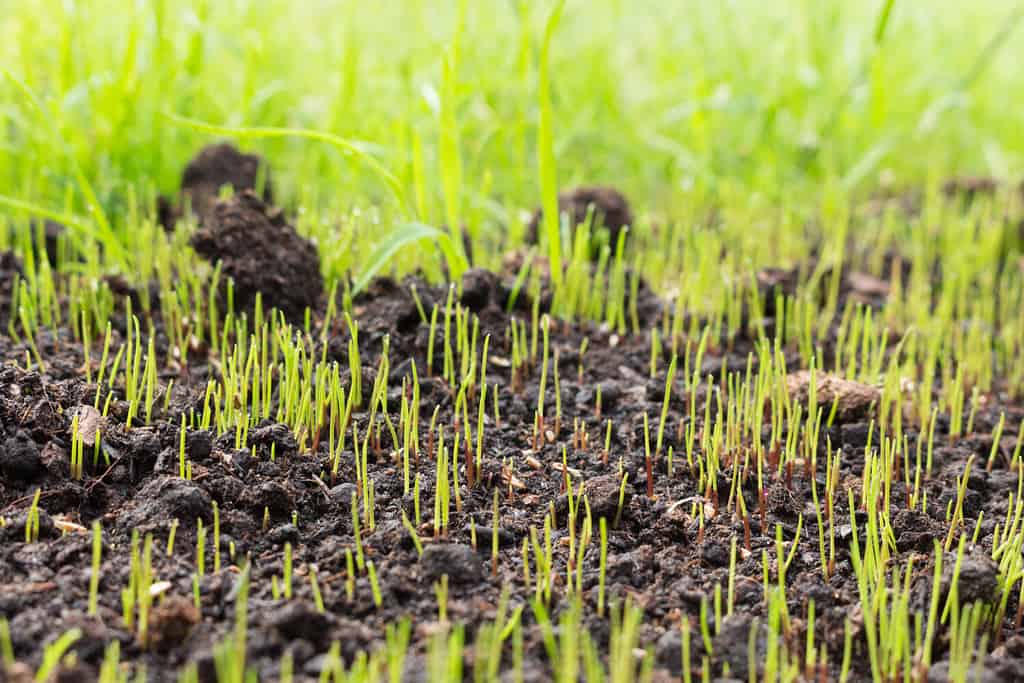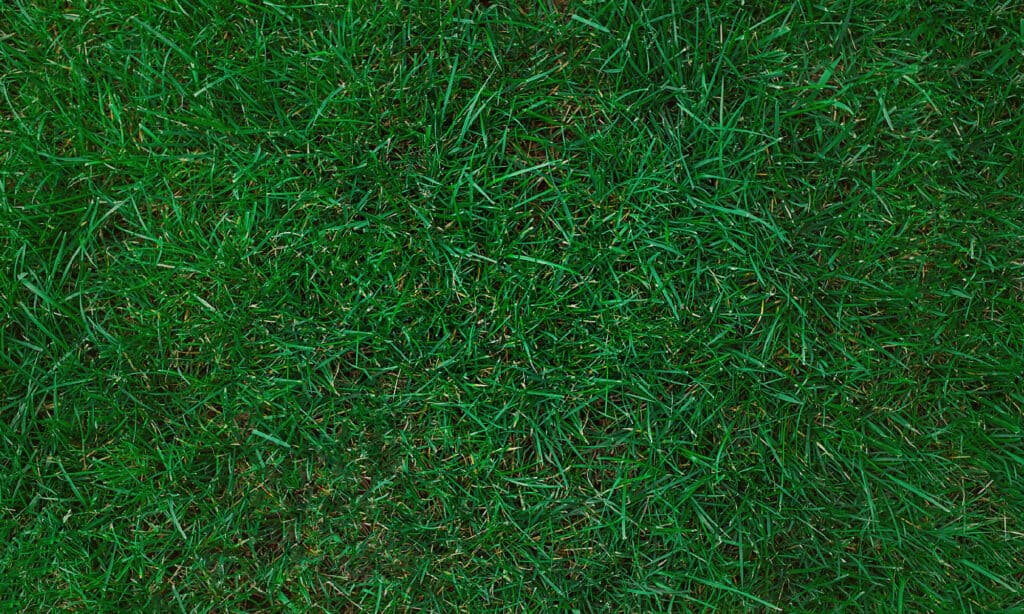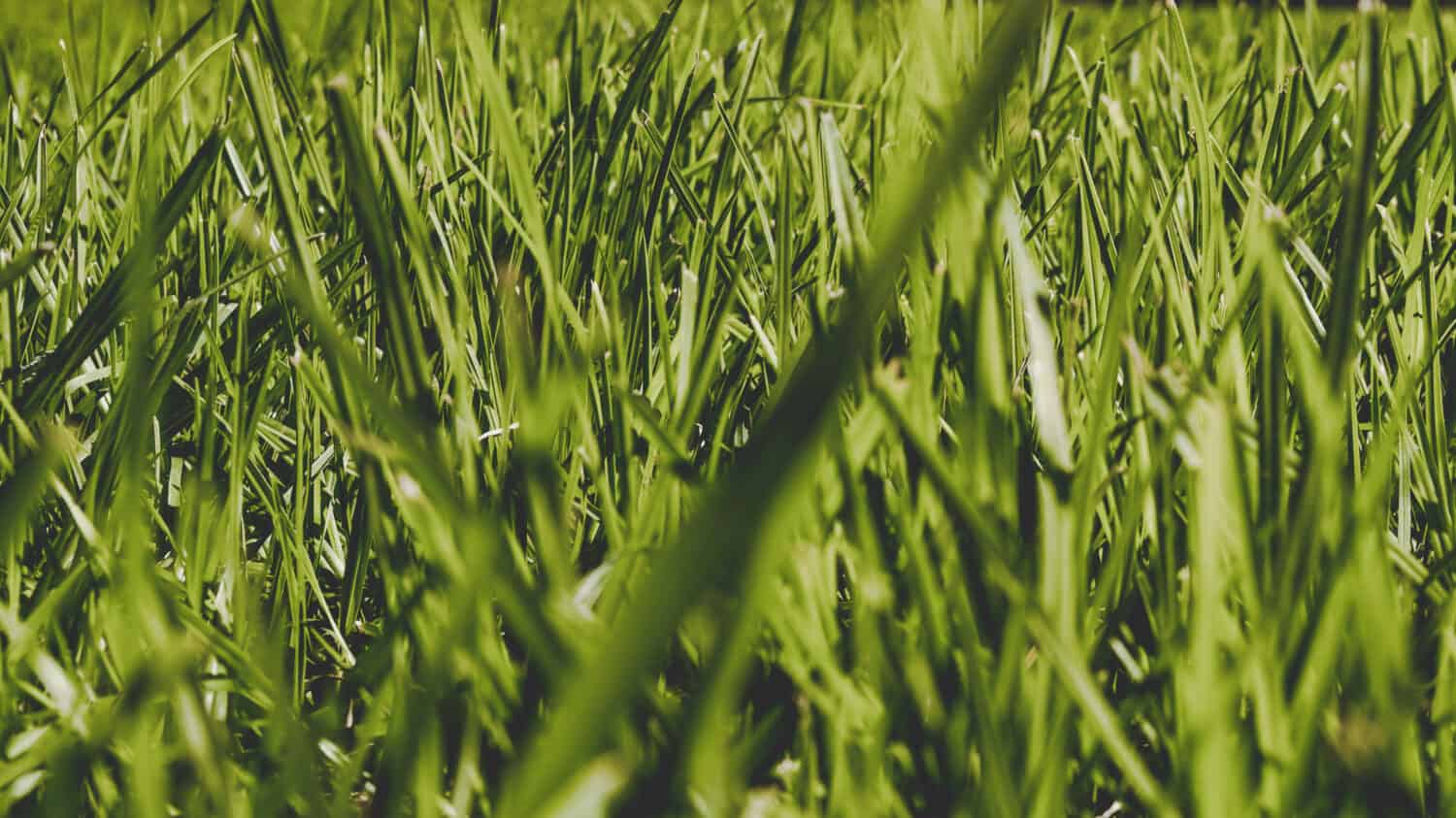Creating a vibrant and healthy lawn in the Pacific Northwest involves careful planning, and one crucial aspect of that plan is choosing the right time to plant your grass. The PNW’s unique climate and weather patterns require specific considerations when it comes to lawn care. Understanding the best time of year to plant grass in this region is essential. Explore the factors that influence the best time to plant grass in the Pacific Northwest, so you can achieve a beautiful and resilient lawn.
What Is the Best Time of Year to Plant Grass in the Pacific Northwest?
The best time to plant grass in the Pacific Northwest is in the late summer through early fall (mid-August to September). This period offers mild temperatures, increased moisture, reduced weed competition, and a lower risk of drought, promoting successful grass germination and growth. Spring is an alternative, but watch for unpredictable weather. Additionally, avoid summer planting due to high temperatures and dry conditions. Proper soil preparation is also crucial for a thriving lawn.

The best time to plant grass in the Pacific Northwest is between mid-August and September.
©philmillster/Shutterstock.com
Popular Grass Cultivars for the Pacific Northwest
When it comes to selecting a grass type for your lawn in the Pacific Northwest, it is essential to choose a variety that thrives in the region’s unique climate. The Pacific Northwest predominantly features a cool maritime climate, but in drier, eastern parts, conditions may be more suitable for warm-season grasses. Discover popular grass types well-suited for the PNW:
- Perennial ryegrass is a top choice for lawns in the Pacific Northwest. It establishes quickly, has a lush appearance, and can handle the region’s cool, moist conditions. This cool-season grass also works well for overseeding existing lawns and has a fine texture.
- Fine fescues, including creeping red fescue, chewings fescue, and hard fescue, are well-adapted to the Pacific Northwest’s cool maritime climate. They are shade-tolerant, low-maintenance, cool-season grasses with a fine texture.
- While Kentucky bluegrass requires more maintenance than some other varieties, it is well-suited to the temperate climate. It produces a lush, dense lawn and thrives in well-drained soil.
- Tall fescue is a robust, drought-tolerant grass variety suitable for the PNW. This cool-season grass is resilient and can handle varying soil conditions.
- Bentgrass, particularly colonial bentgrass, is a preferred choice for golf course greens and putting surfaces in the region. It has a fine texture and thrives in cool, damp conditions.
- Buffalo grass is the only warm-season cultivar suitable for the region. In drier, eastern parts of the Pacific Northwest, buffalo grass can be a water-efficient choice. It requires less irrigation and maintenance than cool-season grasses.
Late Summer to Early Fall Planting
Late summer through early fall is the ideal planting window for many grass species in various regions, including the Pacific Northwest. This period typically spans from mid-August through September and offers optimal conditions for successful grass seeding. Here are a few reasons why late summer to early fall is the prime time for planting:
- Mild temperatures: During this time, temperatures are typically cooler compared to the scorching heat of mid-summer. Cooler weather reduces stress on young grass and provides an ideal environment for germination and establishment.
- Increased moisture: Late summer and early fall often bring more consistent rainfall. Adequate moisture levels are essential for seed germination and the initial stages of grass growth.
- Reduced weed competition: Weeds tend to slow down their growth in the fall, giving newly planted grass a competitive advantage in establishing itself.
- Less risk of drought: Planting in late summer allows grass to develop roots before winter, reducing the risk of drought stress during the hot, dry summer months, especially in the eastern parts of the Pacific Northwest.
- Preparation for winter: Grass planted in late summer and early fall has time to establish a strong root system before the onset of winter, setting the stage for a lush, healthy lawn in the spring.
Whether you’re overseeding an existing lawn or starting a new one, late summer to early fall provides the best conditions for your grass seed to thrive. Proper soil preparation, including testing and amending the soil as needed, further enhances your lawn’s chances of success. So, if you’re aiming for a lush and resilient lawn in the Pacific Northwest, mark late summer to early fall as your go-to planting time.
Spring Planting
While late summer to early fall is the prime time for grass planting in the Pacific Northwest, spring, specifically from late March to early May, can also be a viable alternative for those who missed the fall window or prefer spring planting. Here are some key considerations for spring planting in the Pacific Northwest:
- Warmer temperatures: As the region transitions from winter to spring, temperatures gradually become milder. This warmth supports the germination and initial growth of grass seeds.
- Increased daylight: Longer daylight hours in the spring provide more sunlight, which is crucial for photosynthesis and healthy grass development.
- Soil moisture: Spring typically brings a resurgence of moisture, which can be beneficial for newly planted grass. However, it is essential to monitor rainfall levels and supplement with irrigation if necessary, as the Pacific Northwest can have variable spring weather.
- Weather variability: Be prepared for potential weather fluctuations in the spring, including late frosts or heavy rains. Monitoring local weather forecasts can help you choose the best time to plant.
- Weed control: Spring planting may coincide with increased weed growth. Implementing proper weed control measures is essential to prevent weed competition with your newly planted grass.
- Species selection: Some grass species, like Kentucky bluegrass, fine fescue, and perennial ryegrass, are better suited for spring planting in the Pacific Northwest due to their adaptability to cooler conditions.
While late summer to early fall remains the preferred grass planting time in this region, spring can work well if you take into account the specific weather patterns and grass varieties suitable for the Pacific Northwest’s transitional spring conditions. Proper soil preparation and regular maintenance are essential to ensure a successful spring planting season.

A cool, wet climate covers most of the PNW.
©Bill Perry/Shutterstock.com
The Pacific Northwest’s Climate and Its Impact on Grass Planting
The climate of the Pacific Northwest is renowned for its diversity, ranging from the coastal areas with their mild maritime influence to the inland regions with varying temperature extremes. Understanding this climate is essential when it comes to grass planting, as it profoundly affects the success and maintenance of your lawn. Explore how the Pacific Northwest’s climate impacts the art of grass planting:
Maritime Influence
Along the coast and in many coastal areas, the Pacific Northwest experiences cool and moist conditions. This maritime influence results in relatively mild temperatures and abundant rainfall, particularly during the fall and winter months. Grass species that thrive in cooler and wetter climates, like perennial ryegrass and fine fescue, are well-suited to these coastal regions.
Wet Winters
The Pacific Northwest is characterized by wet winters, which replenish soil moisture and create favorable conditions for grass growth. Late fall and early winter are excellent times for grass to establish deep roots in preparation for the following spring.
Dry, Warm Summers
In contrast, the summers in many parts of the Pacific Northwest are typically dry and warm. These conditions can pose challenges for some grass species, especially if they haven’t had a chance to establish strong root systems during the wetter months.
Temperature Variations
Inland areas, especially at higher elevations, experience greater temperature variations and may have shorter growing seasons compared to coastal regions. Grass selection should consider these variations in temperature and growing conditions.
Shade and Sunlight
The Pacific Northwest’s lush landscape often includes areas of dense tree cover, resulting in varying degrees of shade. Grass types that tolerate shade, such as fine fescue, are crucial for maintaining healthy lawns in these environments.
Soil Variability
The region’s soils can vary significantly, from acidic to alkaline and from well-drained to heavy clay. Understanding your soil’s composition is vital for selecting the right grass species and amending the soil as needed.
Microclimates
The Pacific Northwest boasts a multitude of microclimates influenced by factors like proximity to bodies of water, elevation, and topography. Grass planting timing and selection may vary within the same region due to these microclimate differences.
The Pacific Northwest’s climate is marked by its diversity, which can present both opportunities and challenges for grass planting. By taking into account the specific climate conditions of your location, you can choose the right grass varieties, planting times, and maintenance strategies to cultivate a thriving and resilient lawn in this remarkable region.
Microclimate Variations in the Pacific Northwest
Microclimates are localized climate conditions that can vary significantly from the broader regional climate due to factors such as proximity to bodies of water, elevation, and topography. These variations have a direct impact on the best times for planting grass in different areas of the Pacific Northwest.
Coastal Areas
Coastal areas along the Pacific Ocean tend to experience a maritime climate with milder temperatures and more consistent moisture. These conditions create a more extended planting window compared to other regions within the Pacific Northwest. Late summer to early fall remains a suitable time for planting in coastal areas, as the maritime influence mitigates extreme temperature fluctuations and supports grass growth.
Inland and Mountainous Regions
Inland and mountainous regions of the Pacific Northwest often exhibit greater temperature variations and a shorter growing season. These areas may have distinct microclimates influenced by their elevation and proximity to mountain ranges. As a result, the optimal planting times may differ from coastal areas. In some higher-elevation locations, late spring to early summer could be the preferred planting window when temperatures become more favorable.
Local Weather Guidance
Given the microclimate variability in the Pacific Northwest, it is crucial to rely on local weather patterns and conditions to guide your planting timing decisions. Monitoring temperature trends, rainfall, and frost occurrences specific to your location provides valuable insights into when to plant grass for the best results.
Adapting to Microclimates
Grass species selection should also consider microclimates. For example, in areas with cooler, wetter microclimates, grass varieties like fine fescue may thrive, while in warmer, drier microclimates, drought-tolerant grasses like tall fescue could be more suitable.
Soil Preparation
Achieving a healthy and lush lawn in the Pacific Northwest begins with proper soil preparation. The region’s diverse climates and soil types require careful attention to ensure your grass has the best environment for growth. Here are the essential steps for soil preparation in the Pacific Northwest:
Soil Testing
Start by conducting a soil test. Soil testing provides crucial information about your soil’s pH levels, nutrient content, and texture. You can obtain soil testing kits from local agricultural extension offices or use professional soil testing services.
Adjust pH Levels
Most grasses in the Pacific Northwest thrive in slightly acidic to neutral soils with a pH range of 6.0 to 7.0. If your soil test reveals pH imbalances, you can amend it with lime to raise pH or sulfur to lower pH, following the recommendations from the soil test results.
Improve Soil Structure
Enhance soil structure by adding organic matter like compost or well-rotted manure. This step improves soil aeration, drainage, and moisture retention. Incorporate the organic matter into the top 4 to 6 inches of soil.
Address Drainage Issues
Ensure proper drainage to prevent waterlogging, which can harm roots. Amending heavy clay soils with organic matter can improve drainage,, while sand can help with soil compaction. Consider installing drainage systems if needed.
Level the Soil
Create a smooth, level surface by removing any large rocks, roots, or debris. This step ensures an even lawn and facilitates even grass growth.
Fertilize Appropriately
Based on your soil test results, apply the appropriate type and amount of fertilizer. Slow-release, balanced fertilizers are generally suitable for the Pacific Northwest. Follow recommended application rates to avoid over-fertilization.
Choose the Right Grass Seed
Select grass varieties that are well-suited to your specific location within the Pacific Northwest, taking into account factors like sunlight, climate, and soil type. The right grass species can thrive in your soil conditions.
Seed or Sod Installation
Depending on your preference, either sow grass seed or lay sod. Follow recommended seeding rates and proper sod installation techniques.
Watering and Maintenance
After planting, keep the soil consistently moist to aid seed germination or sod establishment. Monitor your lawn’s moisture needs and adjust watering accordingly.
Regular Maintenance
Regular maintenance, including mowing, fertilizing, and aeration, is essential for a healthy lawn in the Pacific Northwest. Follow best practices for lawn care to ensure long-term success.
Following these soil preparation steps can create an ideal foundation for a thriving lawn in the Pacific Northwest. Adequately prepared soil provides the necessary nutrients and environment for your grass to flourish, even in the region’s diverse climate conditions.

Sod helps combat wind and water erosion, making it a great option for the Pacific Northwest.
©iStock.com/KacieBuccieri
FAQ About the Best Time of Year to Plant Grass in the Pacific Northwest
Can I Mix Different Grass Seed Varieties for My Pacific Northwest Lawn?
Yes, mixing grass seed varieties can provide a resilient and visually appealing lawn. Choose varieties that complement each other and adapt well to the region’s conditions.
How Can I Determine the Right Grass Species for My Specific Location Within the Pacific Northwest?
Consider factors like sunlight exposure, climate, and soil type when selecting grass varieties. Consult with local nurseries or agricultural extension offices for recommendations tailored to your area.
Successful Grass Planting in the Pacific Northwest
Understanding the best time to plant grass in the Pacific Northwest is fundamental to achieving a thriving and resilient lawn. Late summer through early fall stands out as the prime planting window, offering mild temperatures, increased moisture, reduced weed competition, and a lower risk of drought stress. Spring is an alternative, though weather variability should be considered.
Successful grass planting also hinges on soil preparation tailored to the region’s diverse climates and soil types. Conducting a soil test, adjusting pH levels, improving soil structure, and addressing drainage issues are essential steps.
Lastly, remember that the Pacific Northwest’s microclimates influence planting times and grass variety selection, making it important to adapt your approach based on local conditions. Regular maintenance, including watering, mowing, and fertilizing, ensures the long-term health of your lawn.
By taking these factors into account and staying informed about your specific location’s weather patterns, you can create a lush and beautiful lawn that thrives in the unique environment of the Pacific Northwest.
Thank you for reading! Have some feedback for us? Contact the AZ Animals editorial team.








